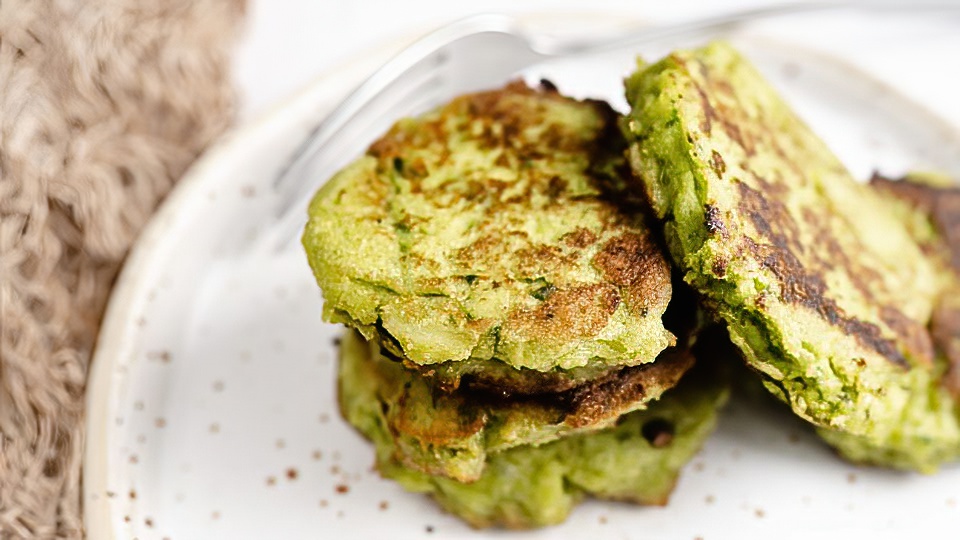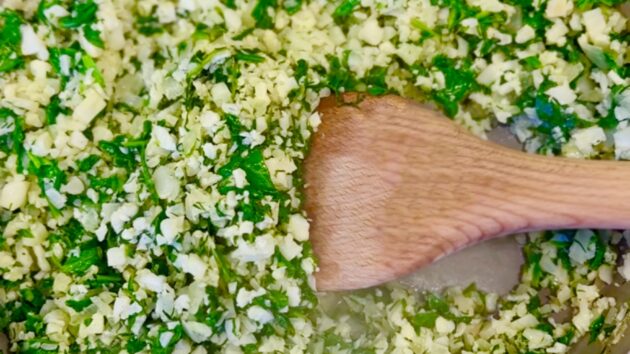Parsnips are not trendy. Even for a root vegetable, they somehow seem old-fashioned and stodgy. Something that usually just gets tucked inside a stew or pot roast.
But let me introduce a new way of looking at the lowly parsnip… These parsnip cakes start with a base of sweet roasted parsnips combined with spinach and egg to form a crisp yet delicate cake. Perfect aside a lunchtime salad or for an unexpected dinner accompaniment for anything from a roast chicken to a lovely piece of grilled fish.
What are parsnips?
Parsnips are a cream-colored, carrot-shaped root vegetable with a thin, tan peel and white flesh underneath. They can be eaten raw but are often roasted, boiled, fried, or steamed.
In the same family as carrots and parsley, parsnips are sometimes mistaken for a white carrot. Parsnips have a distinct flavor of sweetness similar to a carrot but with an earthy nuttiness, with licorice and pepper notes.
Before sugarcane became widely available, Europeans used parsnip as a natural sweetener in baked goods. Like carrots, they are at their sweetest when cooked, especially roasted.
Parsnips are often compared to turnips too, but the two are from completely different families. Turnips come from the Brassicaceae family, which also includes cabbage and broccoli. Turnips are round with a pinkish-purple crown and taste more bitter and spicy than parsnips.
How to buy parsnips
Parsnips can usually be found year-round at supermarkets but are more common in fall and winter. You’ll probably find them near the carrots with their green tops removed. Avoid large parsnips, as these have a woodier core that can be tough and fibrous. Go for small parsnips that are very firm, relatively smooth, and free of dark or soft spots. Ideally, the tip should be pointy and not shriveled.
You can store unwashed parsnips in the refrigerator loosely wrapped in a plastic bag for up to three weeks. Note that – like an apple – cut parsnips oxidize when exposed to air. So if you’re not using cut parsnips immediately, place them in a bowl of water with fresh lemon juice to prevent browning.
To prepare parsnips, start by cutting off the tops and bottoms as you would with carrots. The best flavor is right below the skin, so if you choose to peel, be careful not to remove too much. Otherwise, just give them a good scrub, cook, and enjoy!
Parsnip Cakes
- 25m
- 30m
- 55m
Ingredients
- 5 parsnips
- 1 tbsp. extra virgin olive oil
- 1 1/2 tsp. coarse sea salt
- 1/4 tsp. fresh ground black pepper
- 1/2 c spinach, or your choice of greens
- 1/3 c almond flour
- 2 eggs
- 2 tbsp. coconut oil, or bacon fat
Instructions
- To roast the parsnips: Preheat oven to 425F.
- Cut parsnips into thick slices.
- Toss parsnip slices with olive oil, salt, and pepper in a large bowl.
- Spread the parsnips into a single layer on two baking sheets.
- Roast for 20 minutes, then test for doneness. You should be able to pierce parsnip pieces easily with a fork.
- Keep in a sealed container in the fridge overnight, or if roasting same day, let cool at least 10 minutes before using in parsnip cakes.
- To make the cakes:
- Place 1/2 of the roasted parsnips, spinach, almond flour, eggs, and salt and pepper to taste in the food processor (you will be processing in 2 batches). Remove batter to a bowl and process the other half. Add this batter to the first batch.
- Melt 1 T. bacon fat or coconut oil in a large skillet over medium high heat. Scoop heaping spoonfuls of batter into the heated pan and flatten slightly with a spatula. Let cook for about 3 minutes, then flip. The first side should be golden brown.
- Add another 1 T. fat before frying each additional batch. Serve parsnip cakes hot.
Nutrition
- 233
- 5g
- 16g
- 4g
- 11g
- 7g
- 81mg
- 4g
- 521mg





Read Reviews
See what other people are saying about Parsnip Cakes
No reviews just yet. You can be the first!